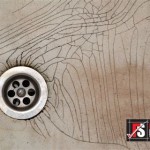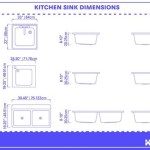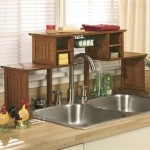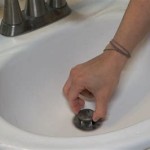Single 48 Inch Vanity With Sink: A Comprehensive Guide
A single 48-inch vanity with sink represents a popular choice for bathroom renovations and new construction projects. This size offers a balanced solution, providing ample counter space and storage without overwhelming smaller to medium-sized bathrooms. The selection of a suitable vanity requires careful consideration of various factors, including material, style, functionality, and installation requirements.
The purpose of this article is to provide a comprehensive guide to understanding the nuances of a single 48-inch vanity with sink. It will delve into the various aspects that influence the decision-making process, enabling readers to make informed choices that align with their specific needs and aesthetic preferences. The discussion will cover materials, styles, sink types, storage options, and installation considerations, offering a holistic perspective on this common bathroom fixture.
Key Point 1: Material Selection and its Impact on Durability and Aesthetics
The choice of material for a 48-inch vanity significantly impacts its durability, aesthetic appeal, and overall cost. Several materials are commonly used in vanity construction, each possessing unique properties and characteristics.
Solid wood vanities are generally considered to be the most durable and aesthetically pleasing option. Hardwoods such as oak, maple, and cherry offer exceptional strength and resistance to moisture, making them suitable for the challenging bathroom environment. Solid wood vanities can be easily refinished and repaired, extending their lifespan and preserving their beauty. However, they are typically more expensive than other material options.
Plywood is an engineered wood product that provides a cost-effective alternative to solid wood. It consists of multiple layers of wood veneer glued together, creating a strong and stable material. Plywood vanities are less prone to warping and cracking than solid wood, making them a reliable choice for humid environments. However, plywood is not as resistant to scratches and dents as solid wood, and its appearance may not be as appealing to some homeowners.
Medium-density fiberboard (MDF) is another engineered wood product that is commonly used in vanity construction. MDF is made from wood fibers that are compressed together with resin, creating a smooth and uniform surface. MDF vanities are typically less expensive than solid wood and plywood options, making them an attractive choice for budget-conscious homeowners. However, MDF is highly susceptible to moisture damage and should be properly sealed and protected to prevent swelling and warping.
Particleboard is the least expensive option for vanity construction. It is made from wood chips and sawdust that are glued together under pressure. Particleboard vanities are lightweight and easy to install, but they are also the least durable and most susceptible to moisture damage. Particleboard is generally not recommended for use in bathrooms unless it is thoroughly sealed and protected from moisture.
Beyond the core material, countertops also present a wide range of choices. Natural stone options like granite and marble offer luxurious aesthetics and high durability, but require sealing and can be porous if not properly maintained. Quartz countertops are engineered stone, offering a non-porous, durable, and low-maintenance alternative. Solid surface materials like acrylic are also non-porous and can be molded into seamless designs, while laminate countertops provide a cost-effective and relatively durable option.
Key Point 2: Exploring Sink Types and Their Functional Characteristics
The type of sink integrated into a 48-inch vanity significantly impacts its functionality and aesthetic appeal. Different sink types offer varying degrees of practicality and visual interest, requiring careful consideration to align with individual needs and preferences.
Undermount sinks are installed beneath the countertop, creating a seamless and easy-to-clean surface. This type of sink offers a clean and modern look, and it allows for maximum counter space. However, undermount sinks require a solid surface countertop material such as granite, quartz, or solid surface to provide adequate support.
Top-mount sinks, also known as drop-in sinks, are installed from above the countertop, with the rim of the sink resting on the surface. This type of sink is relatively easy to install and can be used with a variety of countertop materials. Top-mount sinks are a practical and cost-effective option, but they may not offer the same sleek appearance as undermount sinks.
Vessel sinks sit on top of the countertop, resembling a decorative bowl. This type of sink adds a unique and stylish element to the bathroom, but it may require a taller vanity or faucet to accommodate its height. Vessel sinks can be challenging to clean around the base, and they may reduce the available counter space.
Integral sinks are seamlessly integrated into the countertop, creating a smooth and unified surface. This type of sink offers a modern and minimalist look, and it is easy to clean. Integral sinks are typically made of solid surface materials or molded acrylic, and they can be a more expensive option than other sink types.
Wall-mounted sinks, while not directly integrated into a vanity cabinet in the traditional sense, can be paired with a 48-inch vanity that functions primarily as a storage unit underneath. This combination offers a modern, space-saving solution particularly useful in smaller bathrooms. The sink is attached directly to the wall, freeing up floor space and creating a clean, minimalist look.
The choice of sink material also impacts functionality. Porcelain is a classic choice, offering durability and resistance to staining. Fireclay sinks are also durable and resistant to heat and scratches. Stainless steel sinks offer a modern, industrial look and are easy to clean. Copper sinks provide antimicrobial properties and a unique aesthetic.
Key Point 3: Storage Solutions and Organization Within the Vanity
A 48-inch vanity offers a significant opportunity for bathroom storage and organization. The design and configuration of the storage compartments within the vanity can greatly impact its functionality and usability.
Vanities with drawers offer a convenient way to store smaller items such as toiletries, makeup, and hair accessories. Drawers with soft-close mechanisms prevent slamming and provide a more luxurious feel. The number and configuration of drawers can vary depending on the vanity style. Some vanities feature a combination of drawers and cabinets to provide a versatile storage solution.
Cabinets provide ample storage space for larger items such as towels, cleaning supplies, and extra toiletries. Cabinets with adjustable shelves allow for customization to accommodate different sizes of items. Some vanities feature open shelving, which provides easy access to frequently used items and can add a decorative element to the bathroom.
Consider the internal organization of drawers and cabinets. Drawer dividers can help keep small items organized and prevent them from shifting around. Pull-out shelves or trays can provide easy access to items stored in the back of cabinets. Integrated organizers for specific items, such as hair dryers or curling irons, can further enhance the functionality of the vanity.
The depth of the vanity is also a crucial factor in determining the amount of storage space available. A deeper vanity will provide more room for storing larger items, while a shallower vanity may be more suitable for smaller bathrooms. Consider the available space in the bathroom and choose a vanity depth that allows for comfortable movement and functionality.
Many modern vanities incorporate organizational features such as built-in outlets and USB ports for charging electronic devices. Some also include integrated lighting to illuminate the interior of cabinets and drawers, making it easier to find items. These features can enhance the convenience and functionality of the vanity.
The space beneath the sink is often a challenge to organize due to the plumbing fixtures. U-shaped drawers or shelves can be designed to accommodate the drainpipe and maximize the available storage space. Alternatively, a decorative basket or bin can be placed under the sink to store items such as cleaning supplies or extra hand towels.
Finally, consider the accessibility of the storage compartments. Drawers and cabinets should be easy to open and close, and the handles or knobs should be ergonomically designed. The height of the vanity should also be appropriate for the user, ensuring that items can be easily reached without straining.

Home Decorators Collection Doveton 48 In Single Sink Freestanding Weathered Tan Bath Vanity With White Engineered Marble Top Assembled 48wt The

Home Decorators Collection Doveton 48 In Single Sink Freestanding White Bath Vanity With Engineered Marble Top Assembled 48w

48 Inch Farmhouse Oak Single Bathroom Vanity With Outlet Unique Vanities

Allen Roth Moravia 48 In White Undermount Single Sink Bathroom Vanity With Natural Carrara Marble Top The Vanities Tops Department At Com

Bristol 48 Inch Modern Console Vanity With Rectangular Undermount Sink White

Ravenna 48 Single Sink Bathroom Vanity Combo Set Homebeyond

Shaw 48 Walnut Single Vanity Rejuvenation

Home Decorators Collection Ainsley 48 In Single Sink White Bath Vanity With Black Granite Top Assembled 48w B

Maili Bathroom Vanity With Sink And Carrara White Marble Top Cabinet Ancerre Designs

48 Inch Hickory Bathroom Vanity Single Sink Bath Cabinet Rustic Wood Shaker Solid Double Door Etsy







